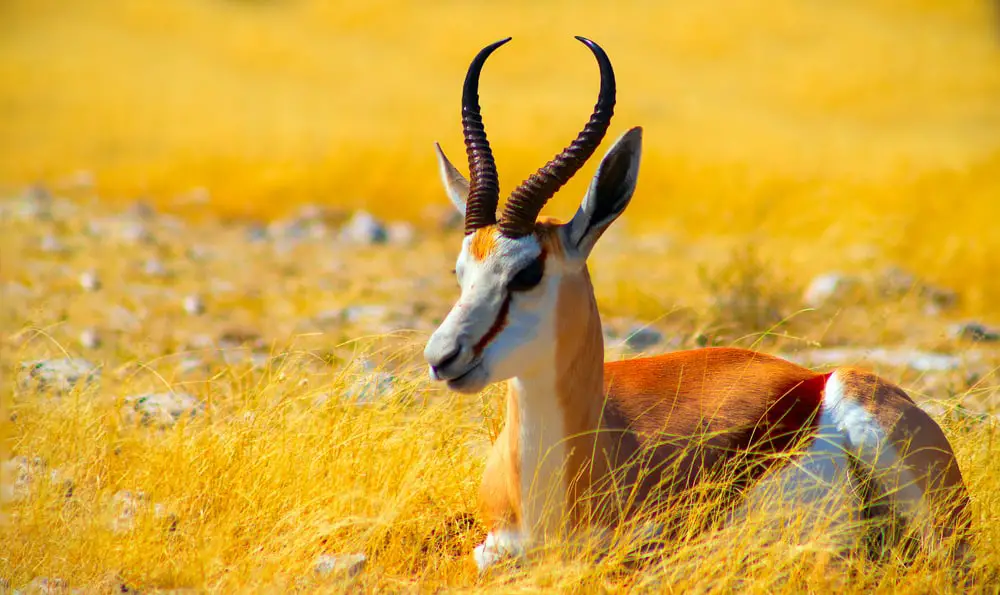
Antelope is a general name used to denote many species with even-toed hooves. Antelopes are mostly found in Africa and Eurasia, and they mainly inhabit savannahs. They are herbivores where they feed on grass, bushes, and small trees.
Antelopes vary in size and weight by species. Large antelopes are 178 cm tall and weigh 950 kgs which small antelopes are 24 cm long and weigh 1.5 kgs. Antelopes have a 20 years lifespan although it varies by species and habitat.
Most of the antelopes are monogamous when it comes to mating. Antelopes graze in large numbers, and they are also fast for defense purposes. Most female antelopes do not have horns. The article evaluates different animals that are similar to antelopes.
Table of Contents
- 1. Sheep
- 2. Goats
- 3. Deer
- 4. Muskoxen
- 5. Bison
- 6. Cattle
- 7. Giraffe
- 8. Camel
- 9. African Buffalo
- 10. Water Buffalo
- 11. Llama
- 12. Alpaca
- 13. Gazelle
- 14. Pronghorn
- 15. Takin
1. Sheep
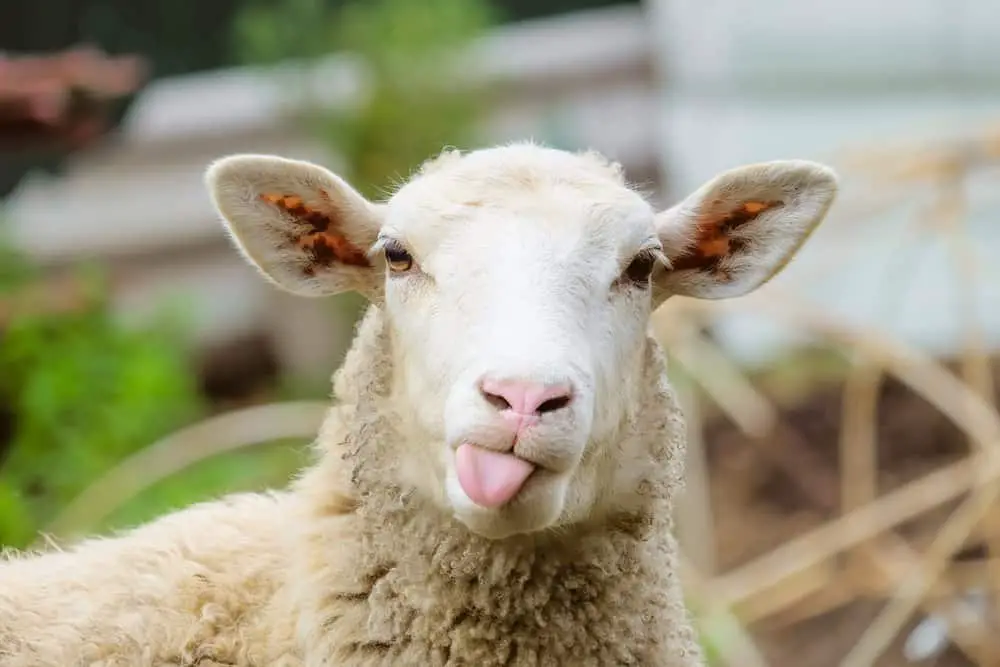
Sheep are both domestic and wild ruminant mammals. They originated in Asia and Europe, but now they inhabit all parts of the world. Sheep are herbivores, specifically glazers, which suggests that they only feed on low-growing plants.
Wild sheep are large and heavier compared to domestic sheep. A normal sheep weighs around 45-160 kgs, and it is 1.3-16 meters tall. Sheep have a lifespan of 10-12 years, although some do live to around 20 years.
Sheep have a flock behavior where they graze in large numbers. They also tend to establish dominance through fighting. Sheep do well in savannahs, although most of them can adapt to different environments.
Antelopes and sheep belong to the same family of Bovidae. Both are hoofed, and they are herbivores. The two are also even-toed, and they exhibit similar grazing behaviors where they both graze in herds.
However, the two differ in the size and shape of horns and their fur’s nature. Sheep have small unbranched horns, while antelopes have long and branched horns. In addition, antelopes have smooth and less dense fur while sheep have fine and dense fur.
2. Goats
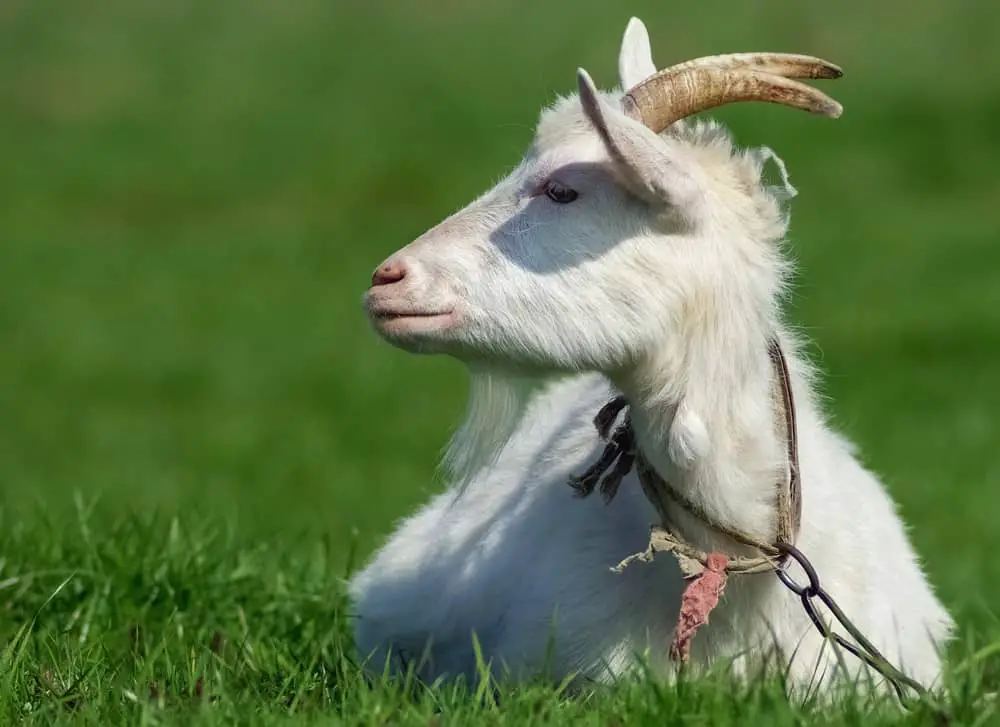
Goats are domesticated mammals, although there also exist wild goats. They are herbivores that browse on trees, bushes, and grass. Goats live in almost all parts of the world since they can survive in any terrestrial biome.
Goats vary in size and weight depending on the species. They weigh around 20-140 kgs, and their sizes range from 41-58 cm. Goat’s life expectancy is around 15-18 years, although research indicates that some goats have survived to 24 years.
Among all animals in the Bovidae family, goats have the strangest behaviors. They are always curious, and they can climb trees. They also do not demonstrate herd behavior compared to other ruminants. Instead, they exhibit communication behavior similar to dogs.
Goats are closest to antelopes compared to other animals. They are both browsers, and they are also similar morphologically. Antelopes and goats have long and curved horns, and they also have smooth fur.
The two also show some differences. Antelopes are faster than goats. Antelopes have hollow horns compared to goats which have solid horns. The two also differ in size, where some antelopes are way larger than goats.
3. Deer
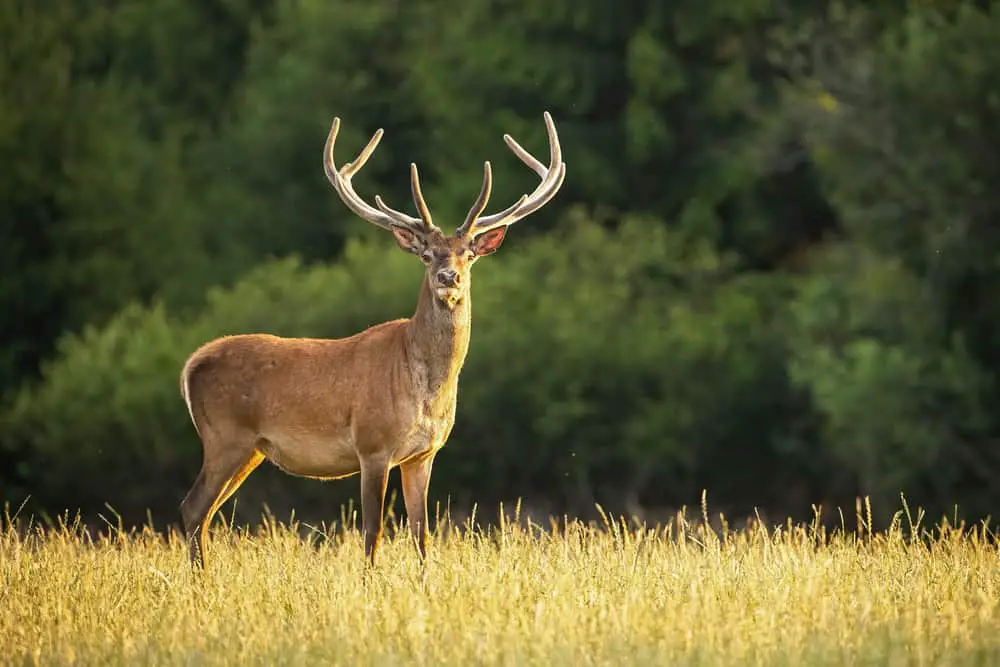
Deer are often confused with antelopes, and yet they belong to different groups. Deer are hooved mammals that belong to the family Cervidae. They are mainly found in tundra and rainforest, although they can survive in other biomes.
Grasses, forbs, and shrubs are the key sources of food for deer. They range in size and weight depending on the species. The largest deer is 2.6 meters tall, and it weighs around 800 kgs. A small deer is 35 cm long, and it weighs 3-6 kgs.
The lifespan of a dear in captivity is 14 years, while that of a wild deer is 4-5 years. Deer are shy animals, and they are also always alert to danger. They respond quickly to threats by running. They are also extremely fast.
Antelopes and deer have some similarities in their morphology. They both have smooth fur, and they are almost similar in size. In addition, both animals are faster, which is an adaptation for defense. Deer and antelopes also belong to the same order, Artiodactyla.
The two animals also have some differences. They belong to different families. Antelopes belong to the family Bovidae, while deer belong to the family Cervidae. Antelopes have permanent, hollow horns, while deer have solid antlers that they shed every summer.
4. Muskoxen
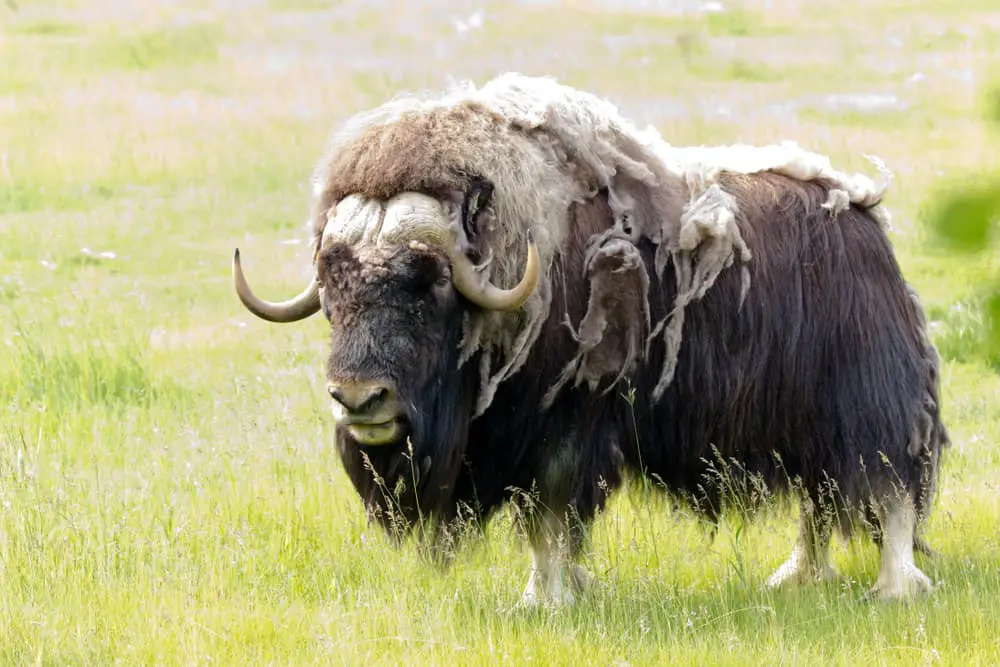
Muskoxen is a mammal that belongs to the family Bovidae. Muskoxen can be found in Canadian arctic Nunavut and Greenland. They have also been introduced in other countries such as Norway and Sweden. Their biomes are typically frozen.
Muskox has unique feeding behavior due to the nature of its habitats. During summer, they feed on arctic flowers and grasses near water sources. During the winters, they use their hooves to get through the snow and feed on plants beneath.
Their sizes and weights vary between males and females, where males are larger. Male Muskoxen are 200-250 cm long while females are 150-200 long. Adult Muskoxen weigh around 180-410 kgs, although most of their weight is contributed by their fur.
Muskoxen life expectancy is 12-20 years. They have herd behavior to protect themselves from dogs. They also have unique mating behavior where male Muskoxen have a strong odor to attract female Muskoxen.
Antelopes and Muskoxen belong to the same family of Bovidae. They both feed on grass, and they have long and sometimes curved horns. They also belong to the same class, and they are even-toed mammals.
The two animals differ based on their fur, mode of feeding, and habitats. Muskoxen have large and dense fur. They inhabit arctics compared to antelopes that inhabit savannahs. Muskoxen feeding behavior varies during summers and winters, which is not the case for antelopes.
5. Bison
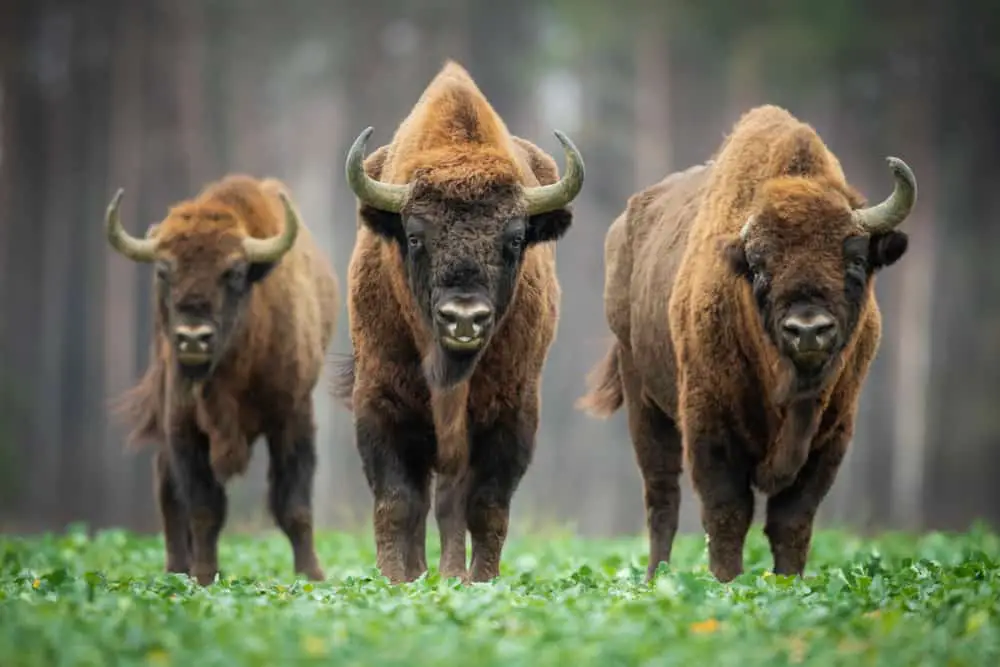
Bison are large mammals that also belong to the family Bovidae. They are even-toed and can be found mainly in Northern America and Europe. Bison consume grass and sedges since they are ruminants. They inhabit semi-open grasslands and scrublands.
Bison weighs 400-1270 kgs, and they are 2 meters tall. Their lifespan is between 10 and 20 years. Bison have wallowing behavior which is mainly for grooming. They also have unpredictable temperament behavior.
They are similar to antelope by the fact that both are even-toed and they have hollow horns. However, the two are also different in size, behaviors, and fur. Bison are large and slower compared to antelopes.
6. Cattle
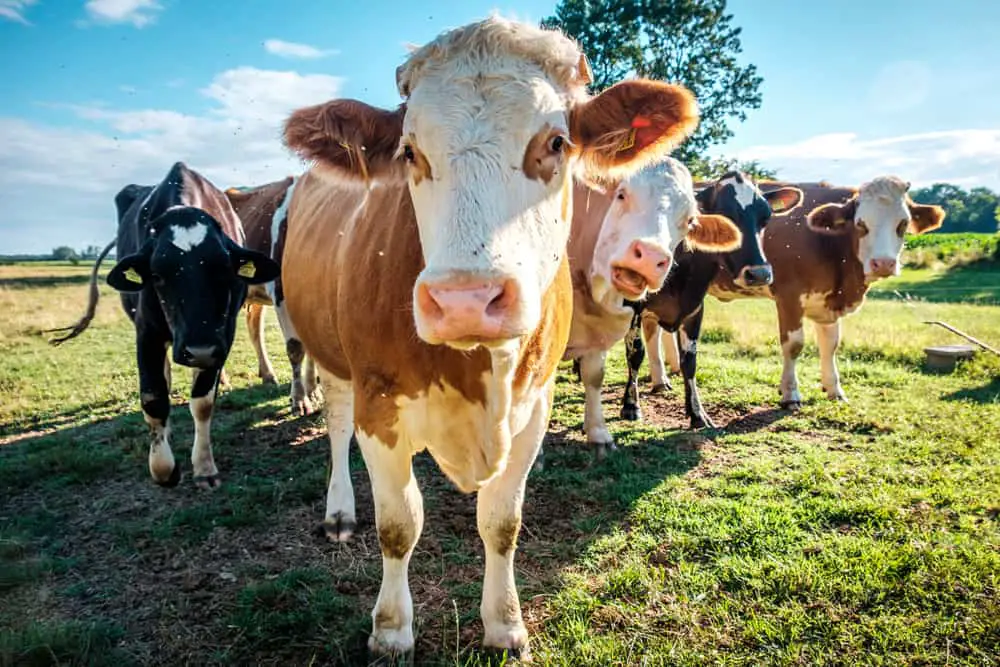
Cattle are cloven-hooved mammals that are domesticated. They are found in all parts of the world. Cattle weigh between 272 and 1500 kgs, although some can weigh more or less than that. Their sizes vary with species where the average size is 1.8 meters.
Their life expectancy is between 15 and 20 years. Cattle take care of their young ones for 11 months. They also calve when there is enough food, and this is one of their best adaptation behaviors. Cows and bulls eat grass, shrubs, and other vegetation.
Cattle are similar to antelope because they possess the features of animals in the family Bovidae. They both have hollow horns, and they are herbivores. The major difference between the two is that antelopes are even-toed, but cattle have cloven-hooved.
7. Giraffe
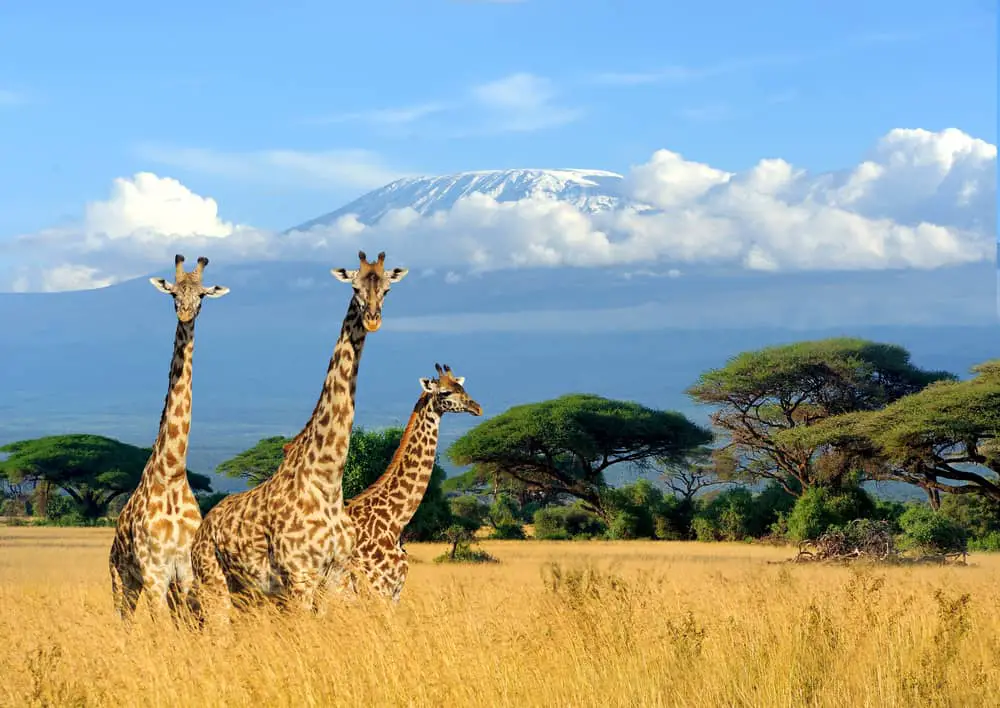
A giraffe is the tallest ruminant in the world. It is also the largest terrestrial animal. Giraffes are mainly found in Africa, where they inhabit savannahs. They feed on tree twigs, although they can also feed on grass. Their lifespan is between 10 and 25 years.
Giraffes are 5.7 meters tall, and they can weigh up to 1 930 kgs. A giraffe has a behavior of salivating while feeding. Their rumination occurs at night. They occur in groups, and they are efficient in taking care of their young ones.
Antelopes and giraffes belong to the same order, Artiodactyla. Both animals are also ruminants, and they chew cud mostly at night. The main difference between the two animals is the presence of horns. Giraffes do not have horns, and they are also way taller than antelopes.
8. Camel
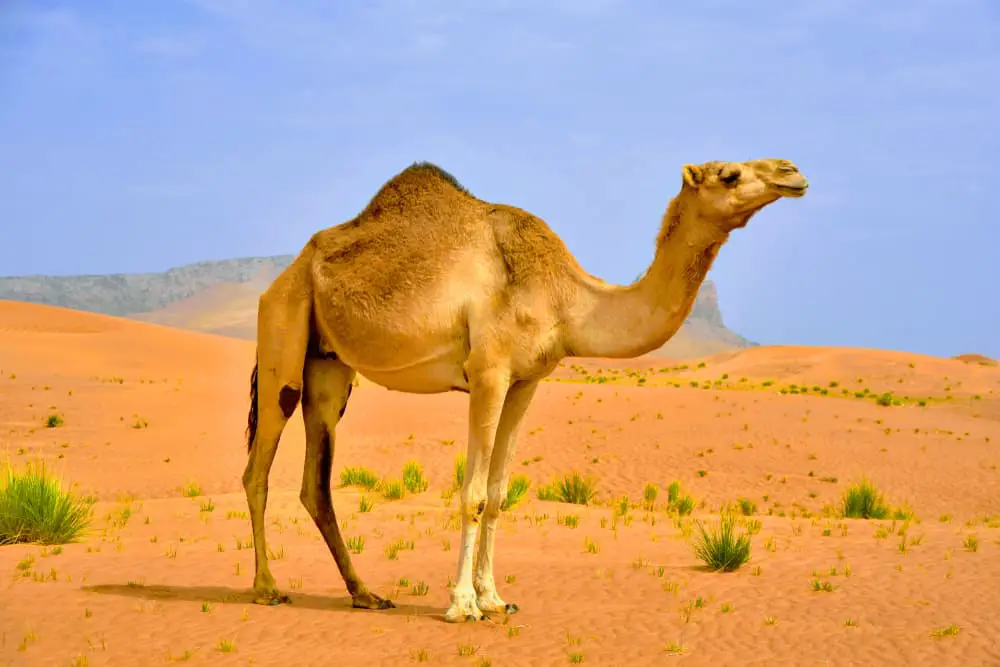
It is so fascinating to know that camels are related to antelope. Camels are large mammals that live in deserts. They have large fatty deposits on their backs as an adaptation to their environment. Their life expectancy is 40-50 years.
Camels are 2.15 meters tall at their humps, and they can weigh up to 1 000 kgs. Camels are social, and they are always in herds. A latent male control the herds. They feed on a variety of vegetation, grass, bushes, leaves, and grains.
Antelopes and camels are even-toed, and they are also ruminants. They both belong to the order Artiodactyla. Antelopes have horns, but camels do not, and antelopes are also faster than camels. Camels are also taller and heavier compared to antelopes.
9. African Buffalo
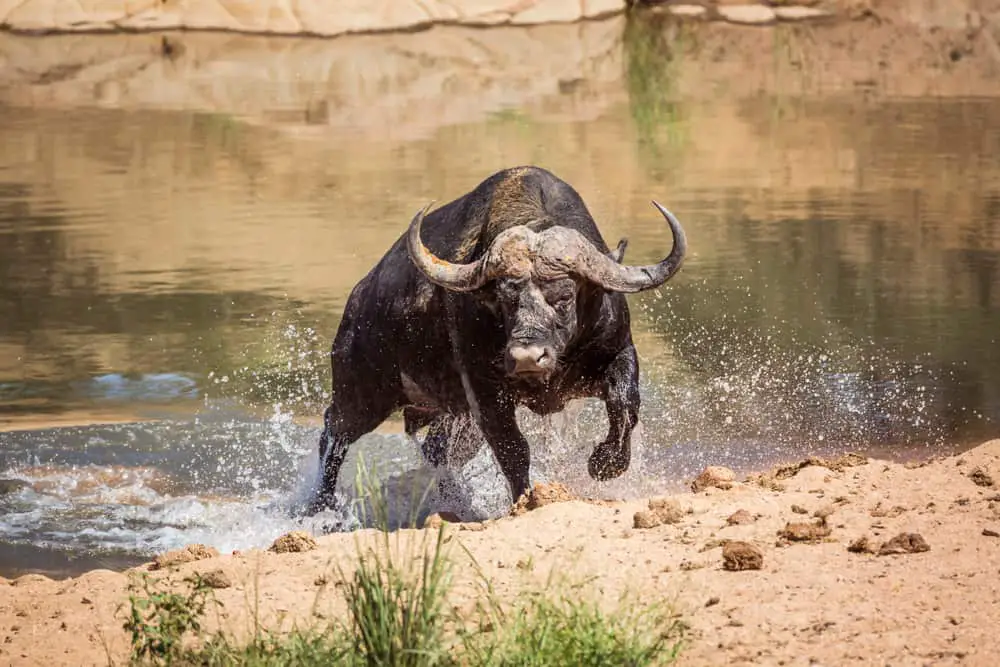
As the name suggests, the African buffalo is a large mammal from different parts of Africa. It lives in sub-Saharan regions, and it is one of the most dangerous animals. African buffalo is 1.7 meters tall, and it weighs around 500-1000kgs.
African buffalos graze in herds of female related and their young ones. Large adult bulls show dominance through frequent fights. They are glazers, and they feed on grass and small shrubs. Their life expectancy is 18 years.
Antelopes and African buffalos belong to the same family. They both have even-toed and hollow horns. However, the horns of an African buffalo are shield-like and are too stronger than those of an antelope. African buffalos are also larger and aggressive compared to antelopes.
10. Water Buffalo
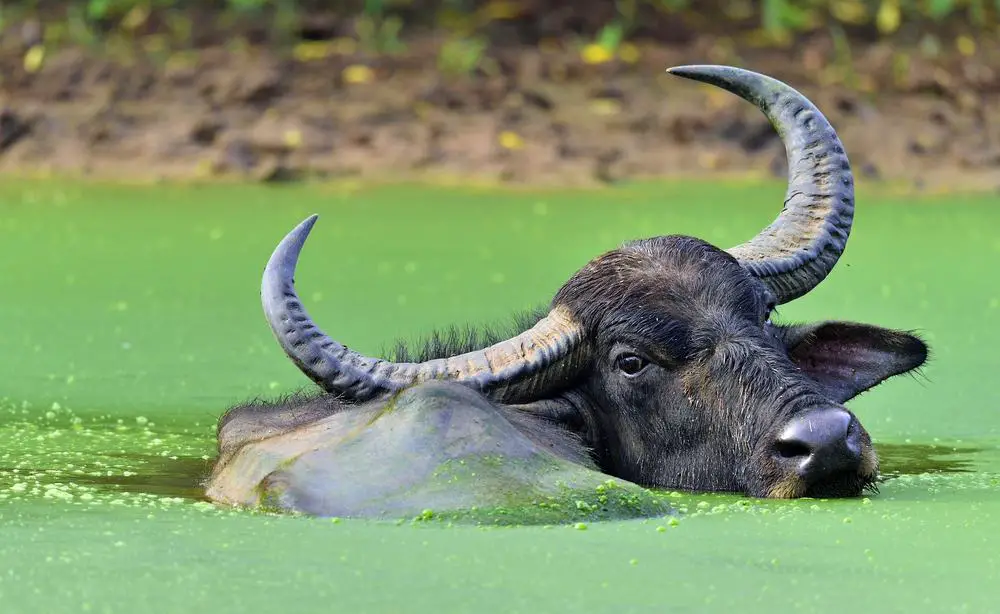
Water buffalos are also large mammals that originated in Asia. They are now in all parts of the world. They can survive in many biomes which have standing waters such as swamps and dams. They are herbivores, and they feed on grass, trees, and other vegetation.
These animals exist in herds, and they enjoy wallowing in mud holes. They also love deep waters where they spend their time. Their lifespan is 40 years. However, wild water buffalos have a shorter lifespan.
Their size and weight vary, but the average size is 1.3 meters, and the average weight is 300-550 kgs. Males are often larger than females.
Water buffalos are similar to antelope due to the presence of horns. They are also both herbivores, and they feed on the same foods. However, the two have some differences. Antelopes are smaller, faster and they do not dwell in the water.
11. Llama
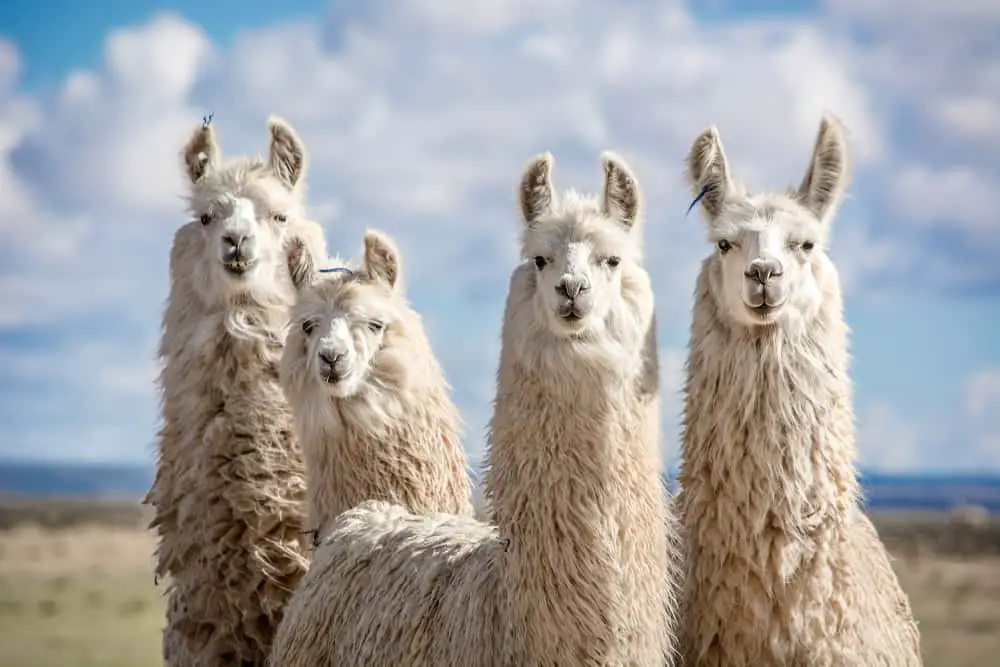
A llama is a domesticated mammal in Southern America. They are herbivores, and they mainly feed on grasses. Llamas are 1.7 to 1.7 meters tall, and they weigh between 130 and 200 kgs. Their lifespan is between 15 and 20 years.
Llamas are social and friendly, and that is why they are a favorite for domestication. They mate in the Kush position, which is not popular among large animals. The mating period can last for 45 minutes, which is also very unusual among big animals.
They are similar to antelopes because they possess characteristics of animals under the order Artiodactyla. Both animals are herbivores, ruminants and they feed on grass. Llamas, however, do not have horns, and they are not fast. The mode of mating is also different.
12. Alpaca
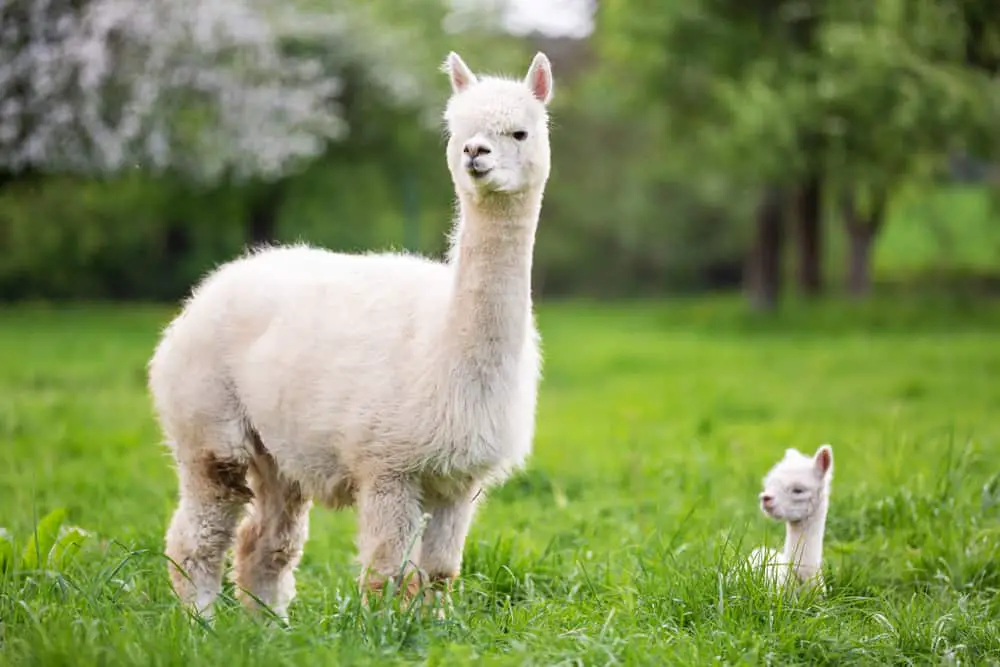
Alpacas are domesticated mammals in Southern America. They are closely related to llamas, but they are smaller. They are herbivores, and they feed on grass. Their average height is 90 cm, and their average weight is 80 kgs.
Alpacas are social, friendly, intelligent but sometimes aggressive. They move in herds as a defense strategy, and they are threatened with someone approaches them from behind. They prefer temperate conditions, and their life expectancy is 15-20 years.
They are similar to antelope because they share the even-toed characteristics possessed by all members of order Artiodactyla. Both animals are also herbivores, and they move in herds. However, the two animals belong to different families, and alpacas are slower and social than antelopes.
13. Gazelle
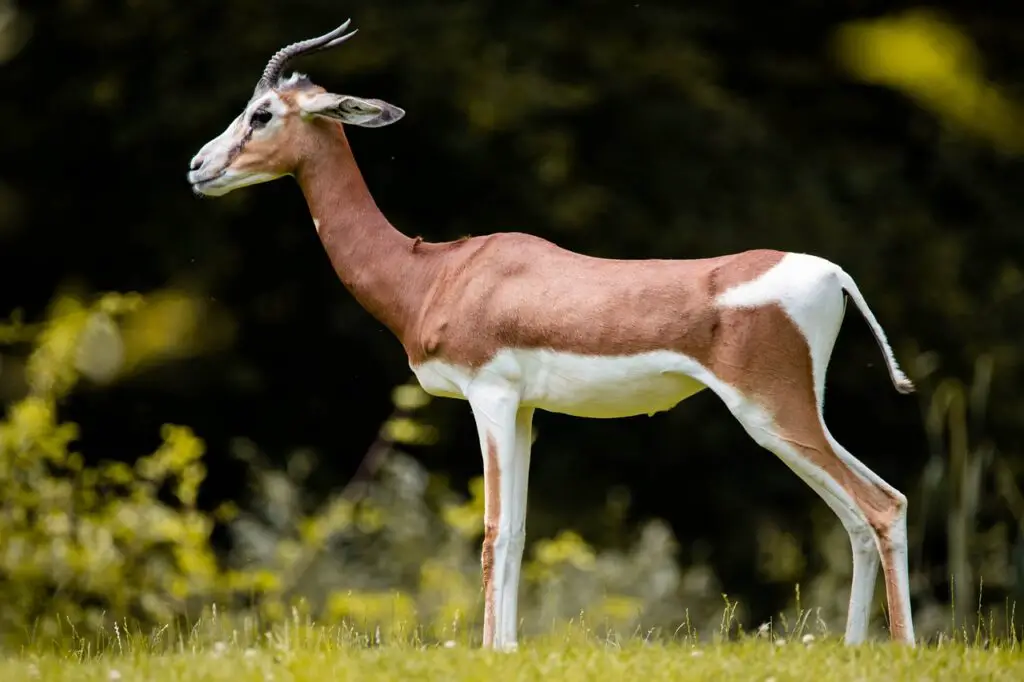
Many research projects classify the gazelle as an antelope, but the two have some differences. Gazelles are mainly found in Africa and Asia, and they live in deserts, grasslands, and savannahs. Their size is 61-110 cm, and their weight is 14-30 kgs.
Gazelles move in herds, and they have a unique stoting behavior. When they are threatened, they move slowly, and then they start leaping vertically, which makes it hard for prey to catch them. They are also extremely fast. Their life expectancy is 10-12 years.
Gazelles are very similar to antelope because both have hollow and curved horns, a four-chambered stomach, and are quick. However, gazelles are smaller, and they have the stoting behavior, which is unique among all antelope species.
14. Pronghorn
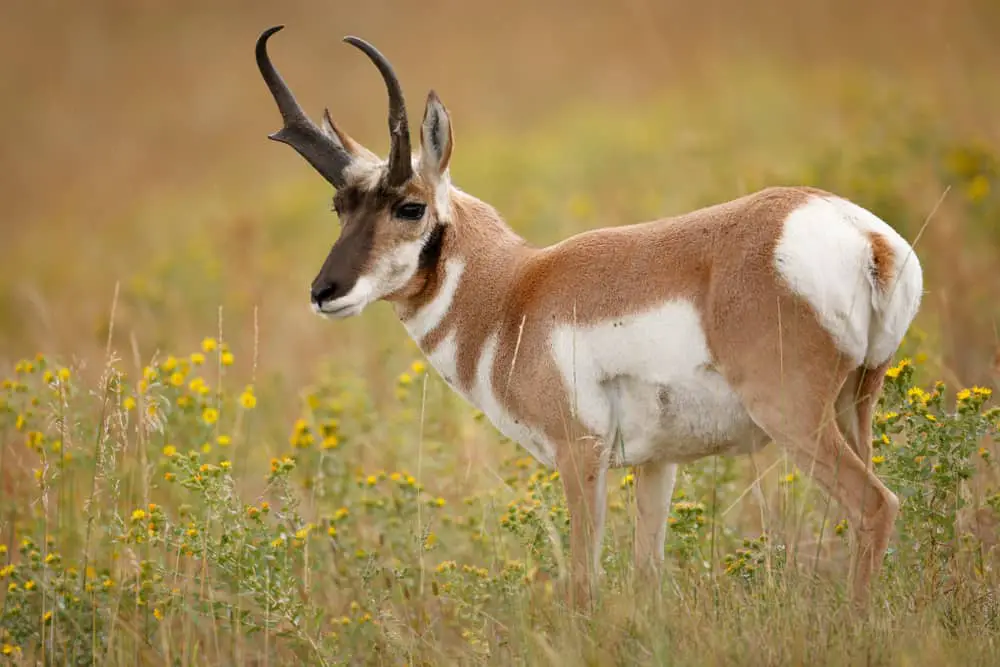
This is a North American indigenous mammal. It is an herbivore that feeds on grasses, forbs, and prairie plants. It is one of the fastest terrestrial animals in the world. It is 1.5 meters tall, and it weighs 65 kgs.
Pronghorns move in herds composed of both genders. Adult males defend the herds from prey. Male pronghorns use vocals to attract females. They have a lifespan of around ten years.
Pronghorn are very similar to antelopes. However, female pronghorns do not have horns which is the case among many antelope species. They are also similar morphologically, and the only major difference is that pronghorns shed their horns every year.
15. Takin
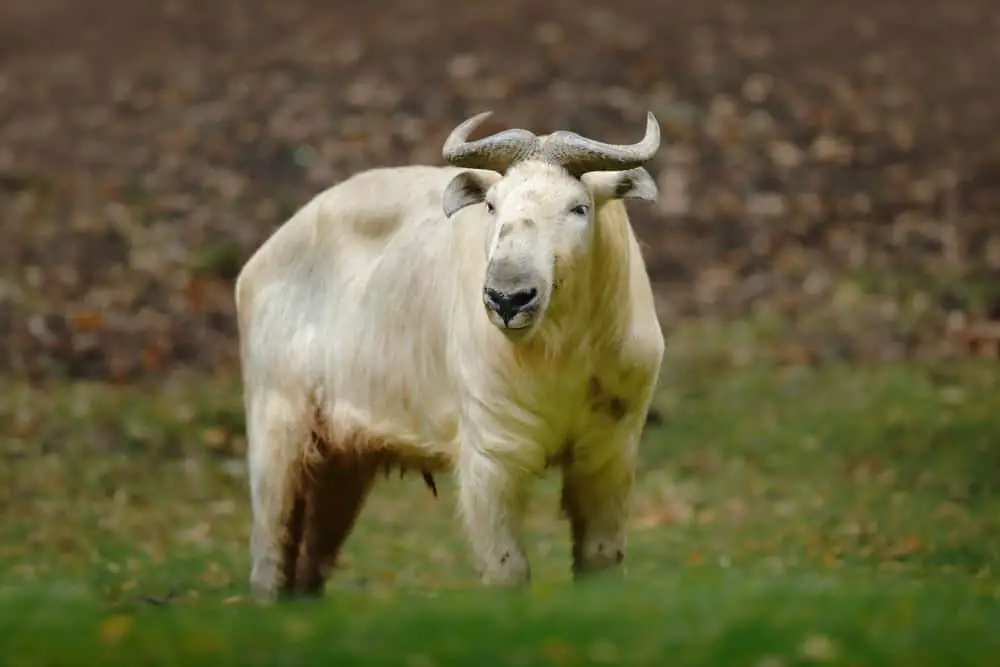
Takin is an even-toed mammal that is found on the east side of the Himalayas. It lives in forested valleys where it feeds on grasses, leaves, and plants. They weigh 350 kgs, and their height is 120-220 cm.
Takins feed during early morning and late afternoon. They live in small families, but they can also move in large herds. Their life expectancy is 21.9 years.
These animals are similar to antelopes because they belong to the same family of Bovidae. They also have harrow horns similar to most of the antelopes. They are, however, heavier, slower, and more aggressive compared to the antelopes.



